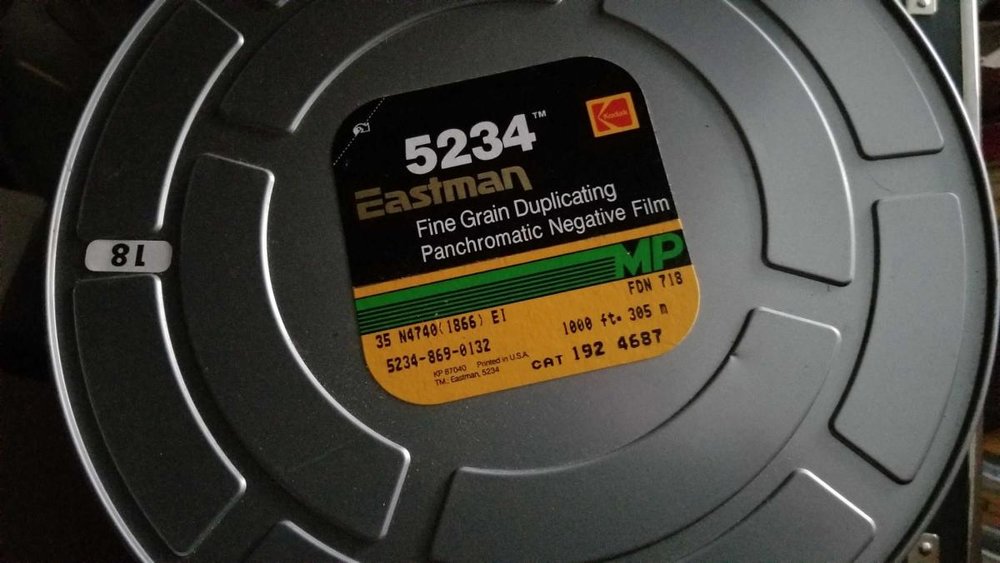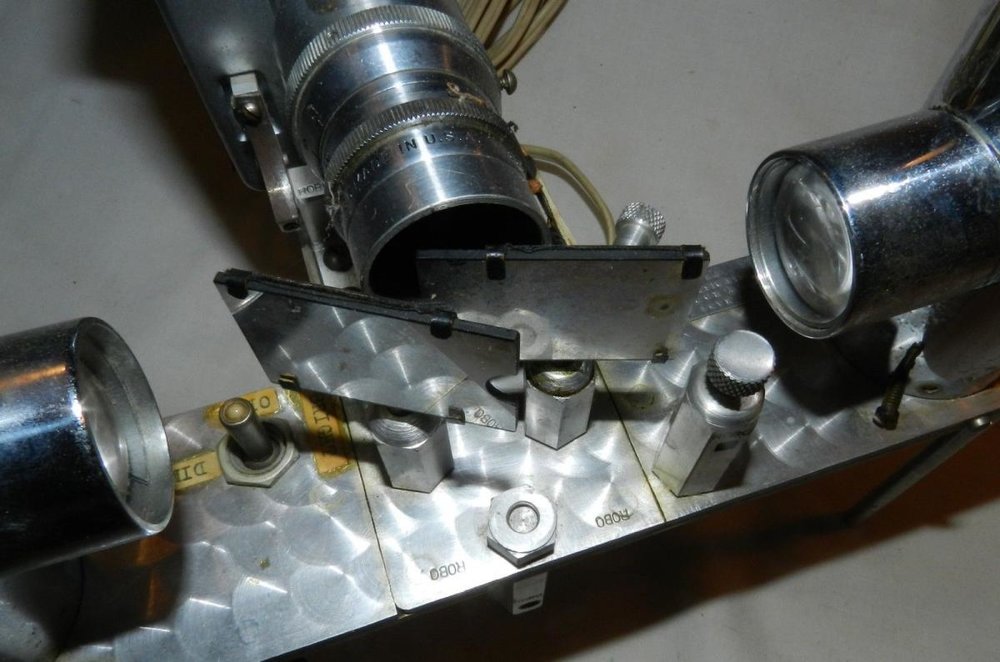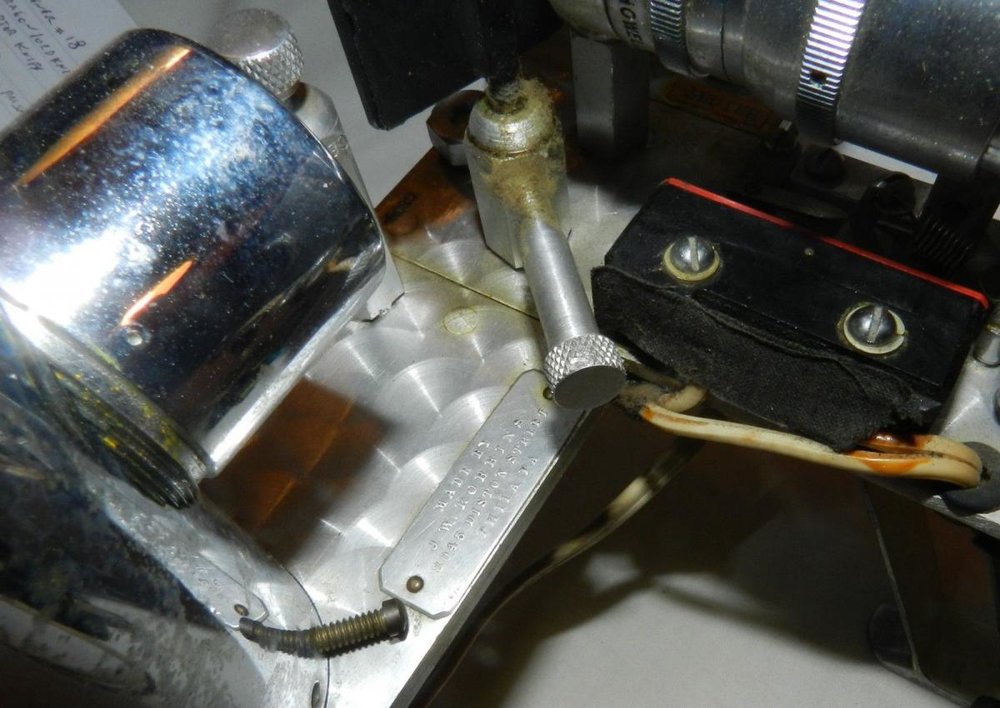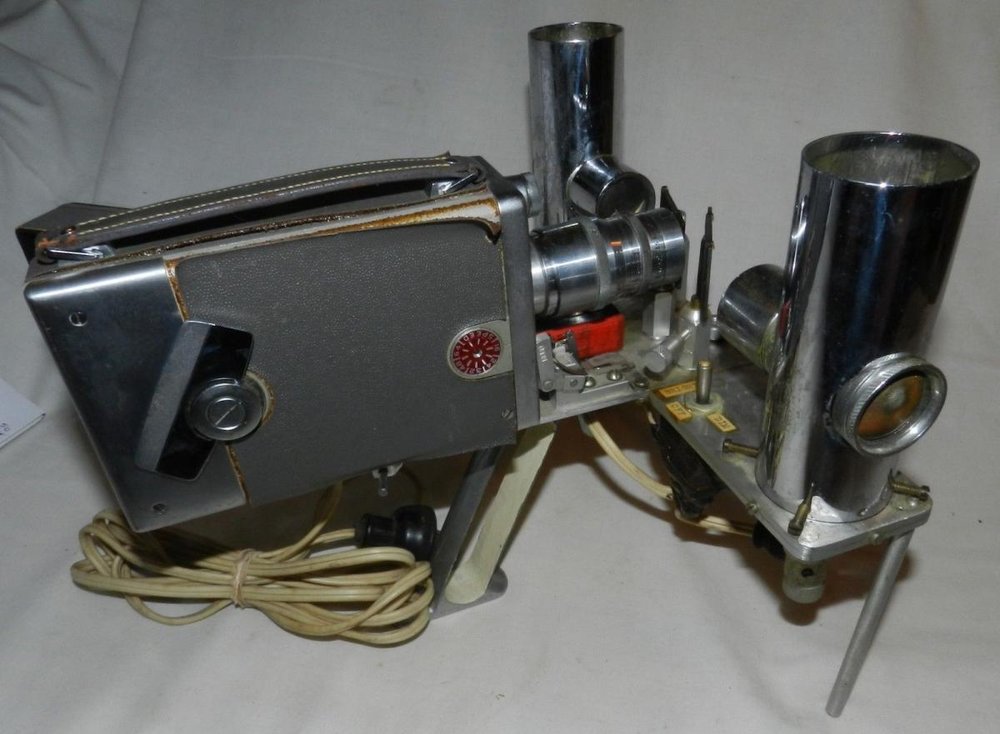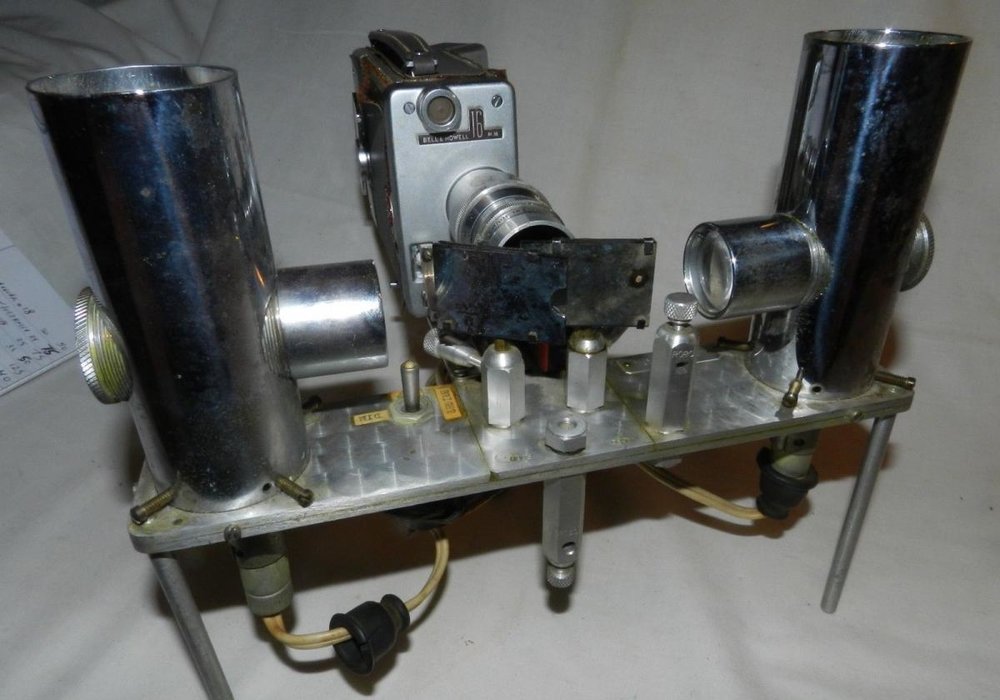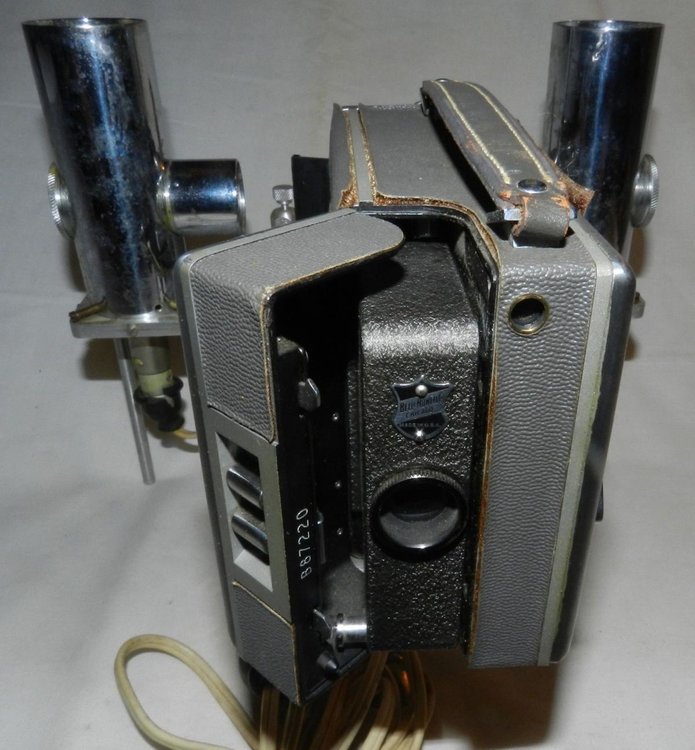-
Posts
237 -
Joined
-
Last visited
Everything posted by Webster Colcord
-
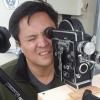
Kodak B&W 5234 vs 5222 outdoors
Webster Colcord replied to Thomas Aschenbach's topic in Film Stocks & Processing
Thanks guys! I will be sure to post the results here (if they look good!)- 12 replies
-

Kodak B&W 5234 vs 5222 outdoors
Webster Colcord replied to Thomas Aschenbach's topic in Film Stocks & Processing
As I understand it, because it's a print stock 5234 has no remjet backing. So if I'm shooting it on a daylight spool, like in an Eyemo, will the lack of remjet allow light to pass thru the film layers? Would I have to load in complete darkness?- 12 replies
-
Pam Smith has listed several Bolex' for sale on this Facebook group: https://www.facebook.com/groups/8mmand16mmfilmmakersgroup/ She lives in France, and her cameras seem to be very reasonably priced. - Webster
-
I love cameras but it's such a burden to collect stuff that I try to keep only what can be used. More important for me is to have an ecosystem of compatible lenses. Digital BMCC - bought used, just for fun and learning Canon 60D - for animation only 35mm Mitchell NCR Mitchell GC Wall Arri IIB Eyemo 16mm Bolex Rex 4 - currently being converted to Super 16 Bolex Rex 3 Bolex M Revere 103 - homebrew Ultra/Super 16, love this camera! Super 8 Canon 1014XLS Elmo Super 110 the cool-looking Bolex a Eumig sound camera a tiny Chinon camera Standard 8 mostly Revere and Keystone from the 30's because of the beautiful craftsmanship
-

Kodak B&W 5234 vs 5222 outdoors
Webster Colcord replied to Thomas Aschenbach's topic in Film Stocks & Processing
I was just gifted 2000ft. of 5234 (from a Freezer) and I'm thinking about shooting with it... wonderful that I was able to find a discussion about it here!- 12 replies
-
https://youtu.be/2AbXQcwHyt4
-
Speaking of the magnetic method - there's a guy in Italy who is mag striping (liquid stripe) 8mm, Super 8, and 16mm prints. He can't do raw negative stock, unfortunately. MOVIE MAGNETIC - Alberto Vangelisti Via Don Milani, 43 52028 TERRANUOVA BRACCIOLINI (AR) ITALY email: moviemagnetic@gmail.com
-
I can't quite tell but it sorta looks like your perfs are on the wrong side, the wrong wind. Like this is the tail end of a roll that has already been run through.
- 5 replies
-
- 16mm bolex
- 16mm
-
(and 2 more)
Tagged with:
-
This is a big subject, but there's lots of material out there to study. Here's a great article on the history of miniature effects: http://nzpetesmatteshot.blogspot.com/2014/12/magicians-of-miniature.html One lighting trick that is often used is to shoot in natural light. Here's some footage of a miniature setup for Inception, shot outdoors: https://vimeo.com/15115350
-
Off topic - but Robino I love your Monsterpalooza 35mm film. So glad you did that.
-

Halloween (1978) lighting?
Webster Colcord replied to Brandon Fields's topic in Lighting for Film & Video
Thanks for that detailed info on the Boston shoot Guy! -
I agree with Frank. One of the rules of any demo reel is to lead with your best thing. If there's anything less than stellar take it out or put it in the middle of the reel. And end with something great as well. I really like the shot with the stopsign and the skateboard. That might be a good one to lead with, followed by something that shows your studio lighting skills. Also there seemed to be a glitch in the middle of the reel on the weightlifter. - Webster
- 6 replies
-
- 1
-

-
- reel critique
- reel
-
(and 1 more)
Tagged with:
-
I don't think the visual metaphor is going to work, or there's going to be an odd subtext to anyone who thinks about it... going thru this (the lobby) glass ceiling is like getting ejected out of the company, not getting promoted upwards. I would suggest bringing in an animation artist to try to interpret it in traditional animation.
- 10 replies
-
- Documentary
- Cinematography
-
(and 2 more)
Tagged with:
-
Actually, thinking about this again - this reminds me of instances where (in previs) we're asked to visualize a script and there's a line that is very difficult to interpret visually. In the "glass ceiling" metaphor the barrier to upward mobility is there but invisible, hence glass. Flying thru the skylight in a lobby is being launched into the atmosphere like in Willy Wonka, not getting a promotion to the upper floor. So the big question is a production design issue: what is the architecture of the "glass ceiling"?
- 10 replies
-
- Documentary
- Cinematography
-
(and 2 more)
Tagged with:
-
I worked on a couple VFX shots like this on Sin City 2, a character crashing thru a window and falling. But since you're saying it's a POV, I'm imagining that you're barely going to see any actual impact with the "ceiling". The low-budget method would be to shoot with a camera moving toward a model or an actual location (undercranked so you don't actually break the glass on location). There would be a couple of flash frames or black frames, then you cut to slow-motion glass flying thru the air away from camera on the "b" side of the shot. Robt. Rodriguez shot slow-motion glass elements against black and I would suggest using something similar. With this treatment it's more about the symbolism of the images than a super involved effect.
- 10 replies
-
- Documentary
- Cinematography
-
(and 2 more)
Tagged with:
-

Som Berthiot Pan Cinor Lens
Webster Colcord replied to John Carty's topic in Lenses & Lens Accessories
I came across some really nice footage shot with an Som Berthiot Pan-Cinor 17-85 f2 lens on a Panasonic GH5. Maybe the shooter is a member here? There's some shots that I believe have digitally added dust elements, I could do without those, but it's really cool to see shots that highlight the unique effects of this lens. https://youtu.be/Z8LfsRVyOzY -

PC for Working with Adobe Premiere
Webster Colcord replied to Larry Stone's topic in General Discussion
Because of the huge size of hirez movie files, and for redundancy/built-in back-up, you may want to add a 2nd harddrive. Also, After Effects (I'm not sure about premiere) should be used with a scratch disc that is on a different drive than the one you're rendering to. Your SSD boot drive is small (256GB) so it could quickly get full then you're stuck with the one drive as both scratch and render location. Some people recommend that using an SSD drive for a scratch disc is faster than a traditional disc. Either way it's nice to have the extra internal space for storage. -
I have a 2B with the flat crystal sync base that Cinema Products made. Something you'll need for Steadicam work (I don't have one unfortunately) is a video tap door. I think there's a couple for sale on ebay right now.
-

Ektachrome 100 is BACK!!
Webster Colcord replied to Nick Collingwood's topic in Film Stocks & Processing
Jesse, can you please put me in touch with your friend who services Auricon amplifiers? I'm currently testing out an old CM-72 system that I'm borrowing. I may already be in touch with him on the Yahoo group, but it would be good to know.- 89 replies
-
- super 8
- ektachrome
-
(and 3 more)
Tagged with:
-
BTW, that crazy camera is still for sale on ebay. Price reduced from what it was originally listed at. Maybe the best way to figure out what it was used for is to buy it and try it! https://ebay.us/XEVSrR
-

Looking for Cooke Speed Panchro 25mm SII/SIII
Webster Colcord replied to Steven Heyse's topic in Cine Marketplace
I sent you a message Steven -
-
Frank, I didn't post this photo before - it really adds to the "home tinkerer" aspect of the rig. He put a plaque on it with his name - Made by J.W. Robbins 8045 Diston Street Phila PA That being said, it's well done in its own way. Knurled aluminum knobs and all. Curiously, it also looks like it was made to be portable, for flat surfaces. Seems like he was doing extreme close-up photography on a tabletop, something that he needed to blast with light.
-
-
Not quite the same, but this old Bell and Howell magazine camera sorta offers direct viewing of the film plane (though not on the film itself) via an accessory magazine with a built-in site (is that called a "boresite"?) This image is from an auction of somebody's old homebrew setup. The tinkerer had mounted a light bar under the front of the camera which seemed to focus light via two mirrors on either side of the lens. Not sure what it was for, but apparently it required a lot of light in a tiny area.



